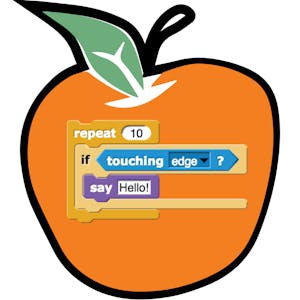Computational Thinking for K-12 Educators: Variables and Nested Loops

$39
ENROLL NOWCourse Overview
How can students learn about abstraction by creating a movie scene? Or make an interactive map using lists? You'll learn (and do it yourself) in this course! This class teaches the concepts of abstraction (methods and parameters) and lists. For each concept, we'll start by helping you connect real-world experiences you are already familiar with to the programming concept you are about to learn. Next, through a cognitively scaffolded process we'll engage you in developing your fluency with problem solving with abstraction and lists in a way that keeps frustration at a minimum. Along the way you will learn about the common challenges or "bugs" students have with these concepts as well as ways to help them find and fix those concepts. You'll also be guided in running classroom discussions to help students develop deeper understanding of these concepts. Finally, you'll learn about the importance and logistics of assigning creative, student-designed programming projects. Additionally, you will create a personal plan for increasing your skills in supporting a culturally responsive learning environment in your classroom.
Course FAQs
What are the prerequisites for 'Computational Thinking for K-12 Educators: Variables and Nested Loops'?
Prerequisites for this continuing education class are set by University of California San Diego. Most professional development online classes benefit from some prior knowledge. Please check the provider's page for specific requirements.
Will I receive a certificate for this CE class?
Yes, upon successful completion, University of California San Diego typically offers a shareable certificate to showcase your new skills and fulfill your continuing education requirements.
How long does this online course take to complete?
Completion times for online continuing education courses vary. The provider's website will have the most accurate estimate of the time commitment needed.





